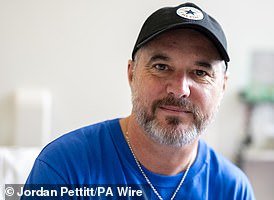I took the world’s first personalized cancer vaccine – it’s my only hope to stop deadly diseases
Music teacher Steve Young has become one of the world’s first patients to receive a personalized cancer vaccine, with a revolutionary jab representing his ‘best chance’ of stopping the disease.
Mr Young, 52, was shocked to learn that an innocent bump on his head was instead a melanoma.
Mr Young recalled the shock of his diagnosis, saying he initially thought it was a death sentence because he had had a ‘bump’ on his head for 10 years.
“I literally spent two weeks thinking, ‘This is it,’” he said.
“My father died of emphysema when he was 57 and I actually thought, ‘I’m going to die younger than my father.’
One of the first patients in the trial at UCLH is Steve Young, 52, from Stevenage, after a bump on his head he had had for ten years turned out to be melanoma.
Mr Young was eligible to take part in a trial hailed as a potential ‘gamechanger’ for cancer treatment.
The new vaccine is tailored to individuals using the specific genetic makeup of their tumor, giving them the best chance of a cure.
It works by telling the body to detect cancer cells and prevent the deadly disease from returning.
The first results of the shot – developed by pharmaceutical giants Moderna and MSD – showed that it drastically improved the survival chances of melanoma, the deadliest form of skin cancer.
Now University College London Hospitals NHS Foundation Trust (UCLH) is leading the final phase of trials of the therapy, which scientists hope could also be used to stop lung, bladder and kidney cancer.
Mr Young said learning about the process at UCLH activated his ‘nerd radar’.
“It really piqued my interest,” he said.
‘As soon as they mentioned this mRNA technology potentially being used to fight cancer, I thought, “it sounds fascinating” and I still feel the same way. I’m really excited.
“This is my best chance to stop the cancer.”
The new jab, which will be tested on around 1,100 patients worldwide, is an individualized neoantigen therapy (INT) and is also called a cancer vaccine.
It is designed to activate the immune system so it can fight back against the patient’s specific type of cancer and tumor.
It is known as mRNA-4157 (V940) and targets tumor neoantigens, which are expressed by tumors and are individual to each patient.
These markers on the tumor may be recognized by the immune system.
The shot encodes up to 34 neoantigens and activates an anti-tumor immune response based on the unique mutations in a patient’s cancer.
Dr. Heather Shaw, national coordinating investigator for the trial, described it as “one of the most exciting things we’ve seen in a very long time.”
She said: ‘I think there is real hope that these will be game changers in immunotherapy.
‘We have been looking for a long time for something that would complement the immunotherapies we already have – which we know can be life-changing for patients – but with something that has a very acceptable side effect profile.
“And it looks like these therapies may offer that promise.”
To make the injection, a tumor sample is removed from the patient during surgery.
Scientists then sequence the tumor genes to identify proteins produced by cancer cells, known as neoantigens, that will trigger an immune response.
These are then used to create an individualized mRNA vaccine that tells the patient’s body to generate T cells to fight the specific mutational signature of the tumors.
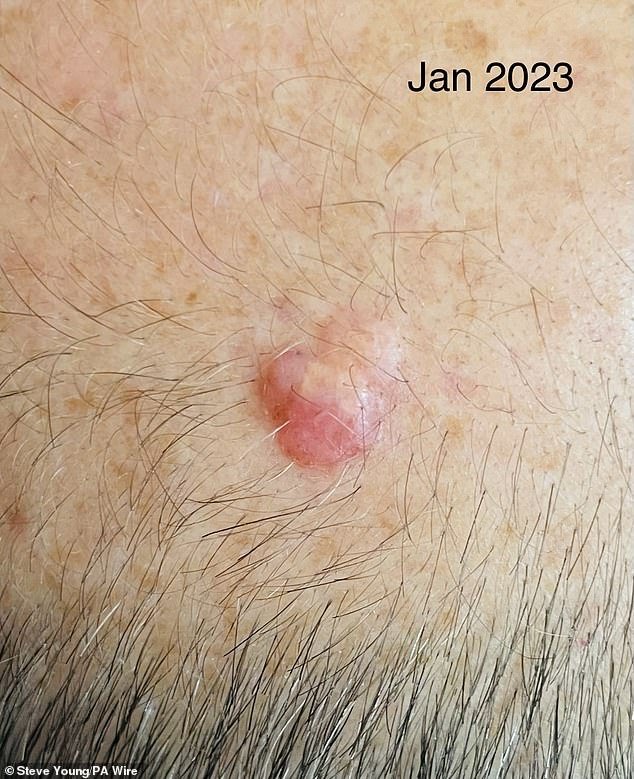
Mr Young, pictured in January 2023 with the melanoma on his head
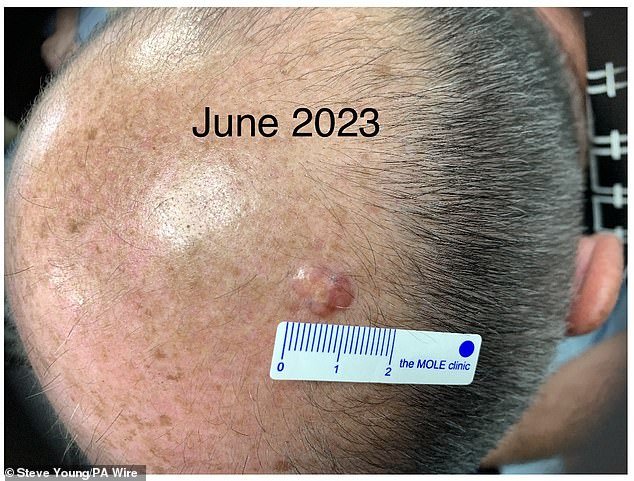
The growth, about an inch in diameter, turned out to be cancerous
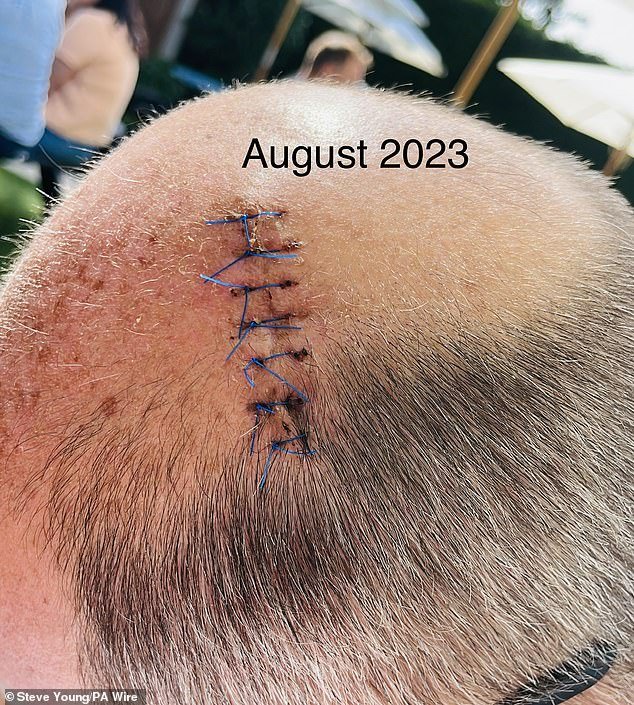
Mr. Young eventually had the melanoma removed. Pictured here are the stitches he had last August
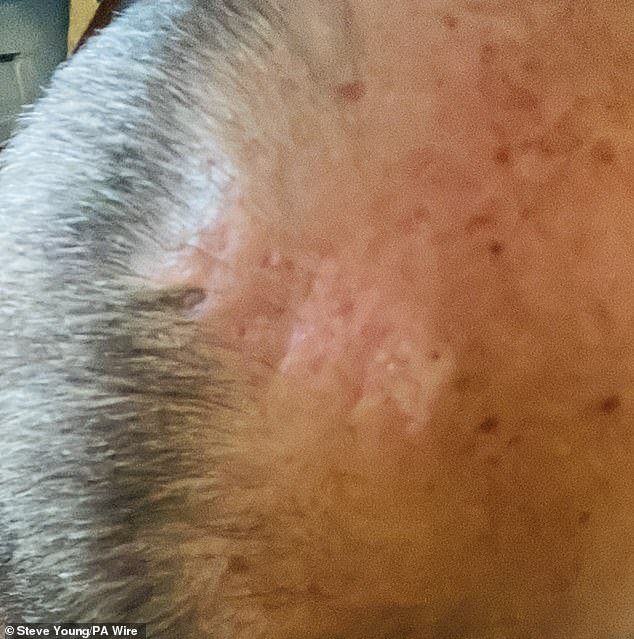
This eventually healed, leaving a scar on his head
The T cells then attack the tumor and kill the cancer cells, while the immune system should recognize any future malignant cells, hopefully preventing the cancer from returning.
Dr. Shaw added: ‘This is very much an individualized therapy and in some ways is much smarter than a vaccine.
‘It is absolutely tailor-made for the patient. You couldn’t give this to the next patient in line because you wouldn’t expect it to work.
‘They may have some shared new antigens, but they probably have their own, very individual new antigens that are important to their tumor and therefore it is really personalized.’
Data from a smaller Phase 2 trial published in December showed that people with high-risk severe melanoma who received the shot alongside the MSD immunotherapy Keytruda were almost half (49 percent) more likely to die or have their cancer would return after three years than those who only received Keytruda.
Patients received one milligram of the mRNA vaccine every three weeks for up to nine doses, and 200 milligrams of Keytruda every three weeks for about a year (up to 18 doses).
The global Phase 3 trial will now include a wider range of patients, including at least 70 UK patients across eight centers including London, Manchester, Edinburgh and Leeds.
The therapy combination is also being tested in lung, bladder and kidney cancer.
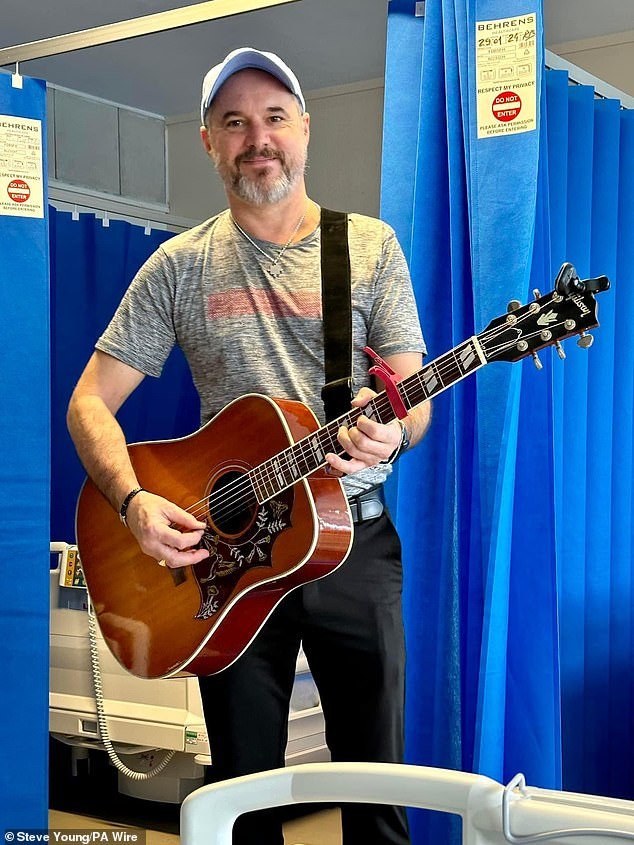
He received a new anti-cancer injection in just eight weeks, which is tailor-made for the patient and tells the body to produce proteins to prevent deadly skin cancer from returning
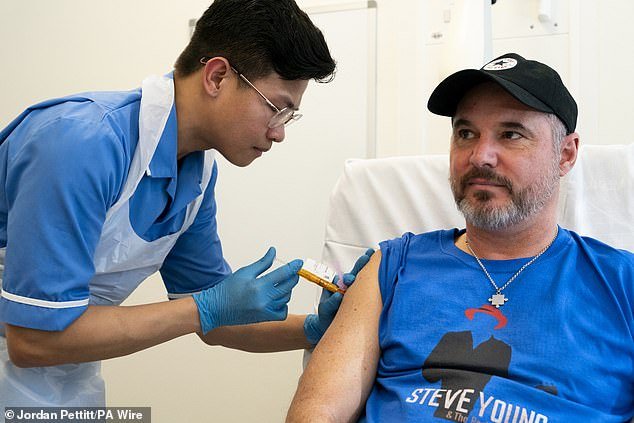
Nurse Christian Medina gives patient Steve Young his first jab at University College London Hospital
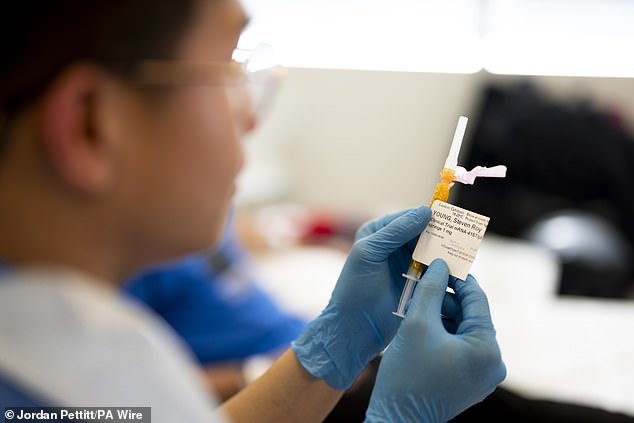
The mRNA-based technology in this study is aimed at people who have already had high-risk melanomas removed
Vassiliki Karantza, associate vice president of MSD Research Laboratories, said: ‘This trial demonstrates our continued efforts to advance new treatment options for patients with melanoma and we look forward to expanding our extensive clinical development program to other tumor types.’
Lawrence Young, professor of molecular oncology at the University of Warwick, who is not involved in the research, said: ‘This is one of the most exciting developments in modern cancer therapy.
‘Combining a personalized cancer vaccine to stimulate a specific immune response to the patient’s tumor, along with using an antibody to release the brakes on the body’s immune response, has already shown great promise in patients at who has had the original skin cancer (melanoma) removed.
‘The hope is that this approach can be extended to other cancers, such as those of the lung and colon.’

